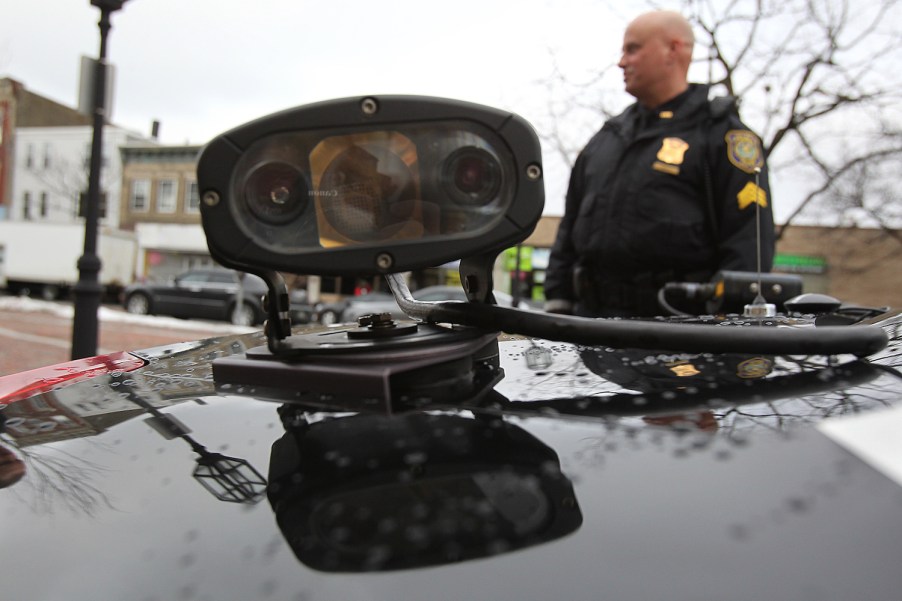
Why Do Some Police Cars Have Cameras on Their Trunks?
Have you noticed police cars with a pair of chunky accessories mounted on their trunks? These devices are a type of camera used for an automatic license plate reader (ALPR) system. In some places, unmarked cars used by bank repossession officers use the same system. This is how they work and how police cars use them to stop criminals. This is Part One of my series on how ALPR technology works and how the government uses it.
What are the scanners on police cars?
If you see two large scanner cameras on the trunk of a police car or the roof of a police SUV, they are likely part of an automated license plate reading system. These scanners snap pictures of every license plate nearby, and a computer in the car looks up the vehicle’s registration.

The most advanced systems can scan and research 1,800 plates a minute–even reading the tags on cars racing by at up to 150 mph. The system snaps bursts of photos of traffic that is passing a parked cruiser. It can also snap photos of parked traffic while the police cruiser is moving.
The system then checks all of these license plate numbers against local, state, and even federal databases. It can run in the background while the officer is doing other tasks. If it finds a plate of interest, it warns the police officer with an audible warning and a notification on their computer.
How do police use license plate reader systems?
License plate reader systems can notify police officers if any car has a registration issue or an All-points Bulletin (APB) attached to its tag number. Some departments also pull over cars if the registered owner has an issue such as a suspended driver’s license.

The Denver Police Department uses its automatic license plate readers (ALPR) to enforce many laws. But Officer Jared Purdy admits that of ALPR-initiated stops, “The majority of them are those driver’s license restraints.”
Many towns also have ALPR units at toll booths and at intersections. Some towns place these systems at their borders to track vehicles that enter the town. These automated units alert a dispatcher if a vehicle of interest passes by.
Do automatic license plate reader systems stop crimes?
Automatic license plate reader systems have proven very effective at stopping crimes. Today, when police put out an APB on a vehicle suspected in a kidnapping or a robbery, it can often be located quickly. In addition, data on a suspect’s past travels can reveal their next move.

According to the Wall Street Journal, ALPR helped catch a kidnapper in 2017. A man named Brian Golsby abducted and murdered a 21 year-old student from Ohio State University. He left her body in a city park and took off in her car, hoping for a clean getaway. But ALPR data instantly found her car and investigators were able to get DNA samples that led them to the murderer.
When investigators attempted to hunt down the U.S. Capital rioters they also turned to ALPR data. They were able to identify one rioter, Dominick Madden of New York City, who took the day off work and then find ALPR shots of him driving down to D.C.
In both of these cases, officials had to turn to private companies that manufacture ALPR systems. Some of these companies maintain vast databases of ALPR snapshots—travel information on millions of drivers—a decision that some civil liberties experts are beginning to protest.
Next, learn how ALPR technology works or see how the Denver Police Department use its ALPR in the video below:



